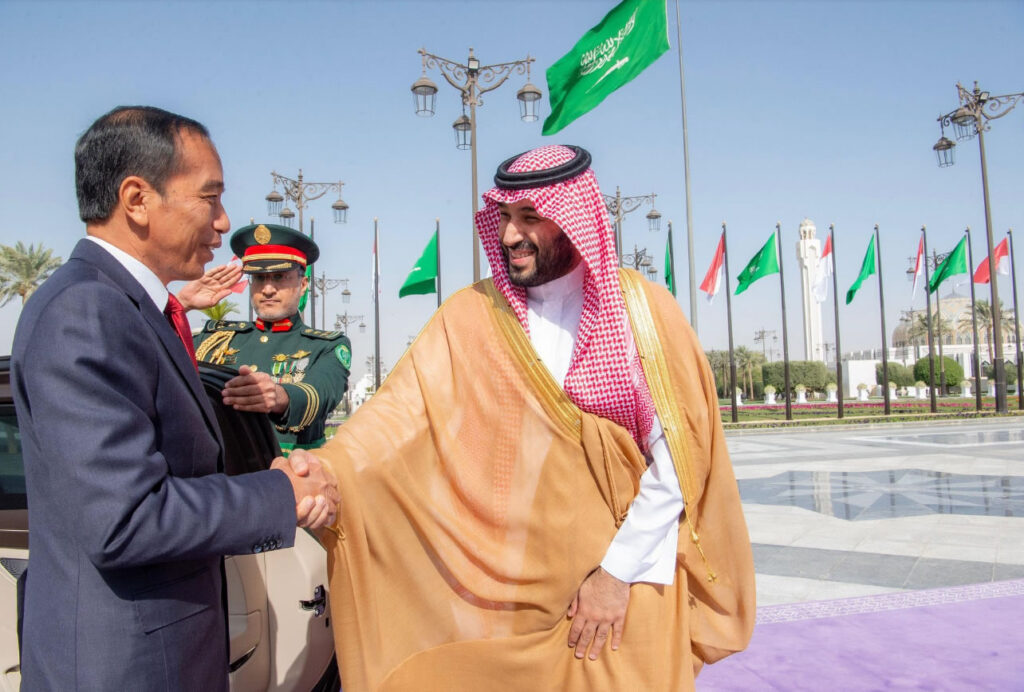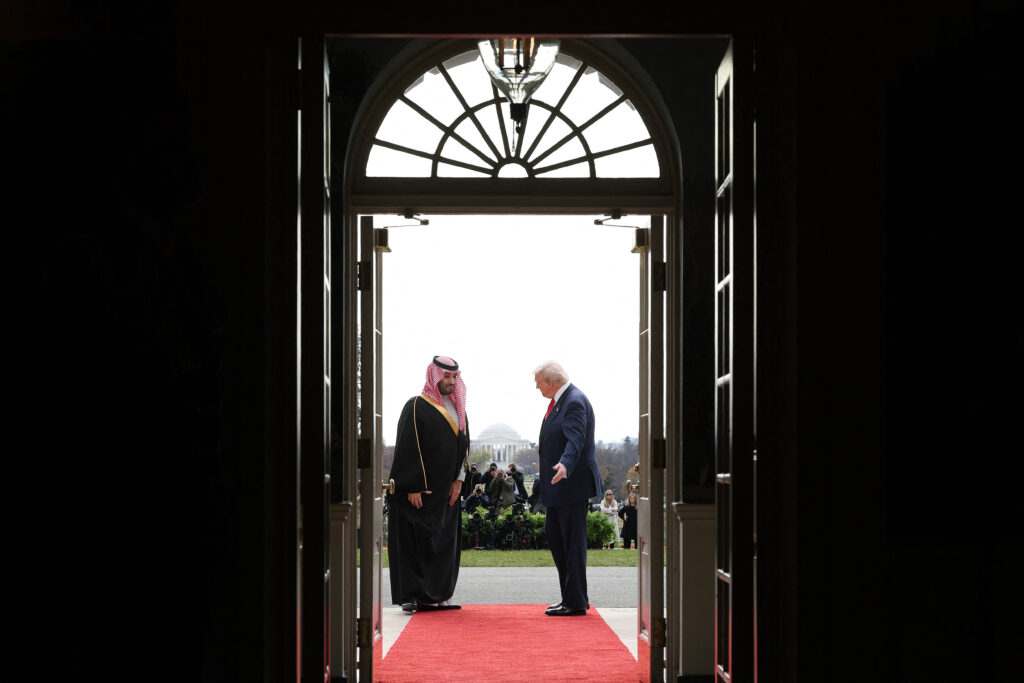Will Asean-GCC Summit Revive Bloc-to-Bloc Relations?
- Aisha A-Sarihi(MEI Research Fellow) & Sharon Seah(ISEAS Senior Fellow)
- -

*By Aisha A-Sarihi(MEI Research Fellow) & Sharon Seah(ISEAS Senior Fellow)
Today (Oct 20), Saudi Arabia will host the inaugural Asean-Gulf Cooperation Council (GCC) Summit, a significant milestone in bloc-to-bloc relations that comes more than a decade since the two regional groupings held their first Ministerial Meeting in Bahrain in 2009. That meeting promised much, but cooperation between the two blocs since then has been negligible.
While Asean-GCC relations have grown modestly since 2009, they have been mainly religious and economic in nature, dominated by trade centring around the exchange of energy for food. Two-way trade increased marginally, from US$77.87bn in 2010 to US$85.23bn in 2021. Crude oil, plastic polymers, and aluminium products are the main Gulf imports to South-east Asia, while food, electronics, machinery, and vehicles have been the main goods heading the other way.
Muslim majority countries in South-east Asia, such as Malaysia, Indonesia, and Brunei have greater religious and cultural linkages with the GCC. Singapore is the only regional country to have an FTA with the GCC, and the UAE is the only Gulf country to sign a Comprehensive Economic Partnership Agreement with Indonesia and Cambodia. While the two organisations have established several contact mechanisms since 1990, both sides have been pre-occupied by their respective growth and economic integration, sidelining bloc-to-bloc cooperation.
Diplomatically, Asean-GCC relations did not enjoy an uptick until the blockade of Qatar was resolved in 2021. Today, all of the six GCC states have acceded to the Treaty of Amity and Cooperation of South-east Asia (TAC) – a peace pact governing inter-state relations in South-east Asia, and a pre-requisite for any party wishing to become a partner of Asean. The first GCC state to accede to the TAC was Bahrain in 2019, followed by Oman, Qatar, and the UAE in 2022, and, finally, Saudi Arabia and Kuwait in 2023. It was not until Kuwait became a TAC signatory in September 2023 that formal elevation of bloc-to-bloc relations was possible. Of the six GCC states, only the UAE became an Asean sectoral dialogue partner, which perhaps reflects the weightier degree of collaboration that Asean has placed on the Emirates.
The reason for minimal multilateral cooperation between Asean and the GCC has been the absence of strategic alignment between the two blocs. As a result, the preferred mode of engagement has been bilateral ties between the Arab grouping and individual Asean nations. Another factor is that the GCC countries are engaged in a form of zero-sum competition between themselves, instead of complementing each other by leveraging on their individual strengths. For example, Saudi Arabia’s recent ultimatum to global head offices to relocate their regional headquarters to the Kingdom or lose out on lucrative government contracts was a clear attempt to undercut the UAE.
That a summit is being held therefore begs two questions: Why is the GCC pursuing a relationship with Asean now, after a dormant decade, and what is in it for both sides?
The high-level meeting — Singapore Prime Minister Lee Hsien Loong and leaders from both blocs will attend — will take place against the backdrop of the Gulf Arab states’ ongoing massive economic and social transformations as part of their respective economic diversification drives. Ensuring security in the volatile region is another imperative. It also comes as the GCC shifts its attentions East, because of the perceived decline in the United States’ interest in the region. The clearest sign of this is the fact that China, Korea, Japan, and South-east Asia are now the main markets for Gulf hydrocarbons, a pivot accelerated by the US shale boom, which reduced American dependency on oil from the Middle East.
These shifts have made regionalism an urgent priority, and there are signs that the GCC is now exploring economic integration more seriously. Last week, for example, it unanimously approved a common visa proposal, to be finalised next month.
Apart from tangible economic benefits, regionalism also creates more strategic space for both parties to manoeuvre in — an outcome that is particularly useful in an increasingly-fragmented world. The name of the geopolitical game is “multi-alignment”. For the GCC, multilateral cooperation provides a means to leapfrog its immediate, troubled, neighbourhood, which has been further roiled by the Israel-Hamas war. For Asean, an elevation of relations allows it to expand its strategic space, by growing its efforts to connect with new partners beyond traditional ones such as the EU. In September, for instance, the 10-member grouping inaugurated the Asean-Pacific Islands Forum.
But perhaps the biggest imperative for both sides to work together is that they are now charting pathways towards achieving their net-zero emission goals. Countries within the two groupings are projected to be among the worst hit by climate change, making this a top priority — Prime Minister Lee has called this an “existential” challenge for Singapore. This provides a big stage for cooperation, as there are natural synergies between Asean and the GCC in the green energy field. These include:
Emerging low-carbon technologies: Like the GCC, Asean is also interested in exploring new low-carbon technologies that can help achieve a successful energy transition. New technologies like Carbon Capture Storage (CCS) and hydrogen are among those being explored by Asean, and the GCC, which is home to three CCS plants, and can thus share its knowledge. This can contribute significantly to similar projects in Singapore, Indonesia, Malaysia, and Timor-Leste, which has been admitted to Asean “in principle”, but is still awaiting full membership.
Both groupings have also made hydrogen central to their decarbonisation plans, an emerging field which can provide a basis for collaboration in research and development. If these technologies prove viable, the GCC can replicate its role as the major conventional energy provider to Asean by doing the same with hydrogen.
Carbon markets: For Asean, carbon markets are a key instrument for achieving net-zero emissions. The region is home to rich forests and biodiversity, which have great potential as carbon reservoirs. The Gulf, on the other hand, is known for its arid environment. Carbon trading and offsetting can thus help the two regions complement each other.
Finance: Financial cooperation is another key area. Gulf nations can support their food security, carbon offset goals, and economic diversification plans by investing in Asean, which is relatively worse off financially — a major challenge to its environmental and climate investment goals. Innovative climate investments in Asean countries can open new green growth markets and business opportunities, by creating new renewable energy projects, provision of technical services, or investments into grid interconnections for Gulf firms, for example.
The two regions have already taken small steps in this regard. The Emirates-based renewable energy company, Masdar, for instance, signed a power purchase agreement (PPA) for renewable energy projects in Indonesia and Malaysia. Similarly, renewable energy and the green economy were listed as promising areas for cooperation when Singapore Minister for Foreign Affairs Vivian Balakrishnan met his Saudi counterpart Prince Faisal Farhan Al Saud recently.
Exchange of knowledge and know-how: Both regions have made strides in developing human capacity, know-how and setting policies and regulations to address environmental challenges, both at the national and regional levels. Within both groupings, however, the pace of change has been uneven. Knowledge exchange platforms, such as conferences, workshops, or forums, could address this issue.
Other areas of cooperation include agriculture and food security. The latter is a major challenge for the GCC, which imports between 50 and 90 per cent of its needs — only 7 per cent of which comes from Asean. Singapore, Indonesia, and Malaysia are major players in the halal food sector, and could prove a boon for the Gulf.
These areas form just the opening act. A convergence of strategic priorities amid the rapidly evolving geopolitical environment provides a strong impetus for both Asean and the GCC to explore both long and short-term cooperation in other areas.
In 2009, a combination of factors — not least a lack of common ground — led to the promise of cooperation petering out. Much has changed since then. The answer to the questions of why now, and what is in it for both sides is: Both groupings face similar, urgent challenges, and have proven adept at tackling some aspects of these. That provides the best reason to expect that a summit right now is a matter of great timing.
*Dr Aisha Al-Sarihi’s areas of research expertise and interest include clean energy policy and climate economics, policies and governance, with a focus on the Arab region. Following her PhD, from 2016 to 2017, she was a research officer at the London School of Economics and Political Science’s Middle East Centre. She was also a former visiting scholar at Arab Gulf States Institute in Washington (2017) and Georgetown University’s Center for Contemporary Arab Studies (2018). Before joining MEI, Dr Al-Sarihi was a research associate in the Climate and Environment Program at King Abdullah Petroleum Studies and Research Center (KAPSARC) from 2019 to 2021. She holds a PhD from the Centre for Environmental Policy at Imperial College London and a MSc and a BSc, with distinction, in environmental science from Sultan Qaboos University.
*Prior to academia, Ms Sharon Seah spent 15 years in the Ministry of Foreign Affairs and the National Environment Agency of Singapore. Her research interests are in ASEAN, multilateralism, rule of law, and climate change. Ms Seah graduated with a Master in Public and International Law from the University of Melbourne in 2018. She is co-editor of 50 Years of ASEAN and Singapore (World Scientific: 2017) and editor of Building a New Legal Order for the Oceans (NUS Press: 2019) for Tommy Koh. She is also the lead author of The State of Southeast Asia Survey Report and the Southeast Asia Climate Outlook Survey.







